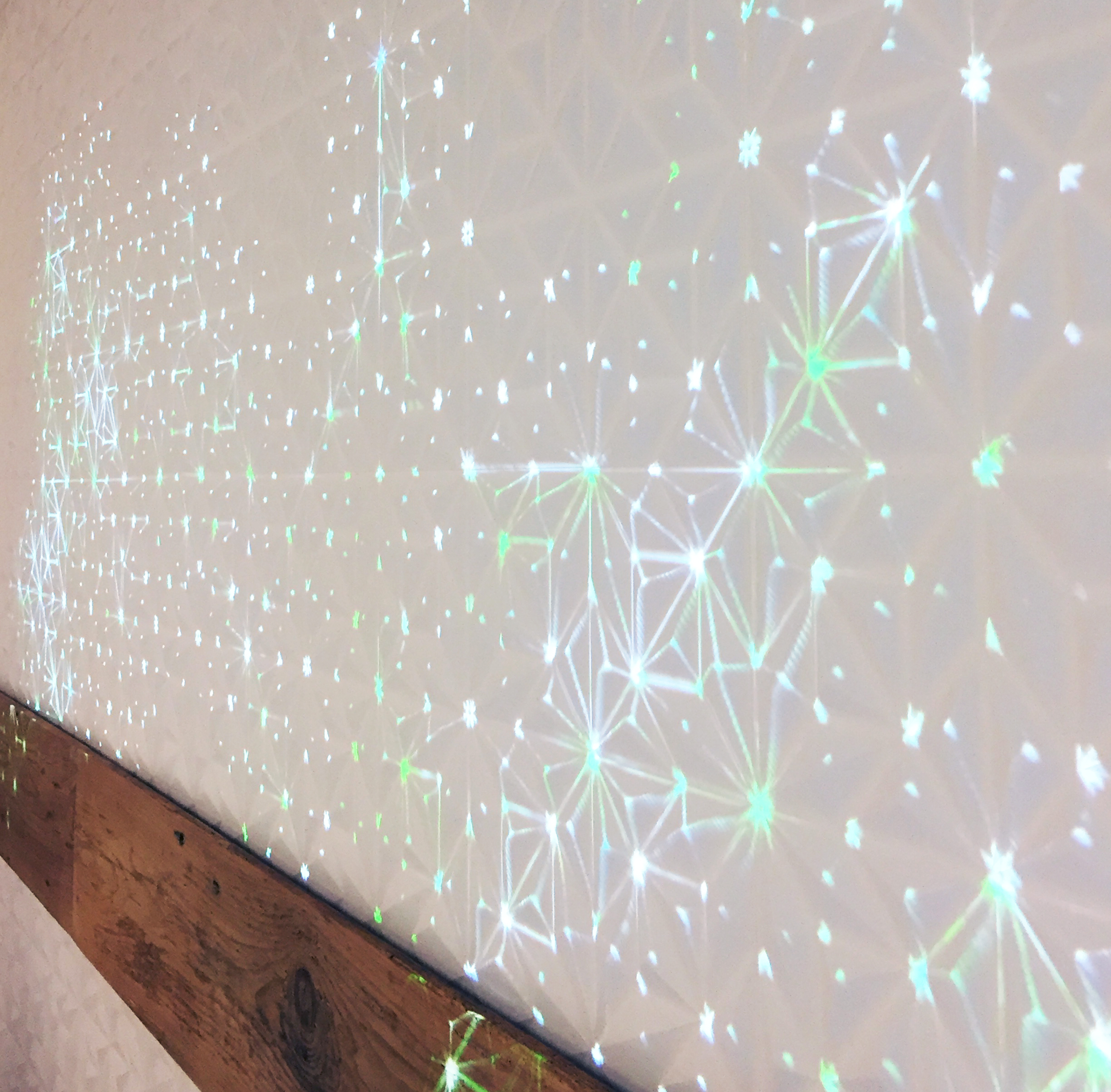TOYOTA RESEARCH INSTITUTE - PROJECTION MAPPING LOGO
The Toyota Research Institute asked for a creative and compelling permanent digital installation that incorporated their brand, so Methods and Materials created a permanent projection installation that is micro mapped to a white tessellated wall finish that replaces permanent signage by including appearances of the logo at regular intervals. An elegant hybrid of the digital content and the physical materiality, the installation is located directly behind the reception desk so it is the point of first impression for the company.
Although the bright light on the upper left corner of the logo seems like a reflection of the camera flash, it is actually created by using projection mapping to lighten specific faces of the backboard, giving the opaque backboard a reflective appearance.
To test our installation prototype we set up a full-scale mockup of the entire installation within our studio, upside down, with the projector rested on the floor instead of on the ceiling. The entire mockup was inverted, included the tessellation and the wood panel that was used in the final installation, so we could map the projector precisely to specific knots.
The initial concepts for the animations were derived loosely from real-world processes and events relevant to the TRI, such as autonomous vehicles emitting a light to scan their surroundings, or the vertical garden in the TRI workspace. The projection content ebbs and flows so the textures that pattern the walls eventually resolve into the logo.
The wooden panels were sources from a barn built by the first congressman of New Hampshire in 1776.
To prevent the projection from interfering with the secretaries behind the desk, we created an ultra short throw projector mounted two feet from the wall. The projection throw skims the surface and doesn’t allow for the possibility of visual interference (like shadowing the projection content or projecting onto people passing in front of it).





